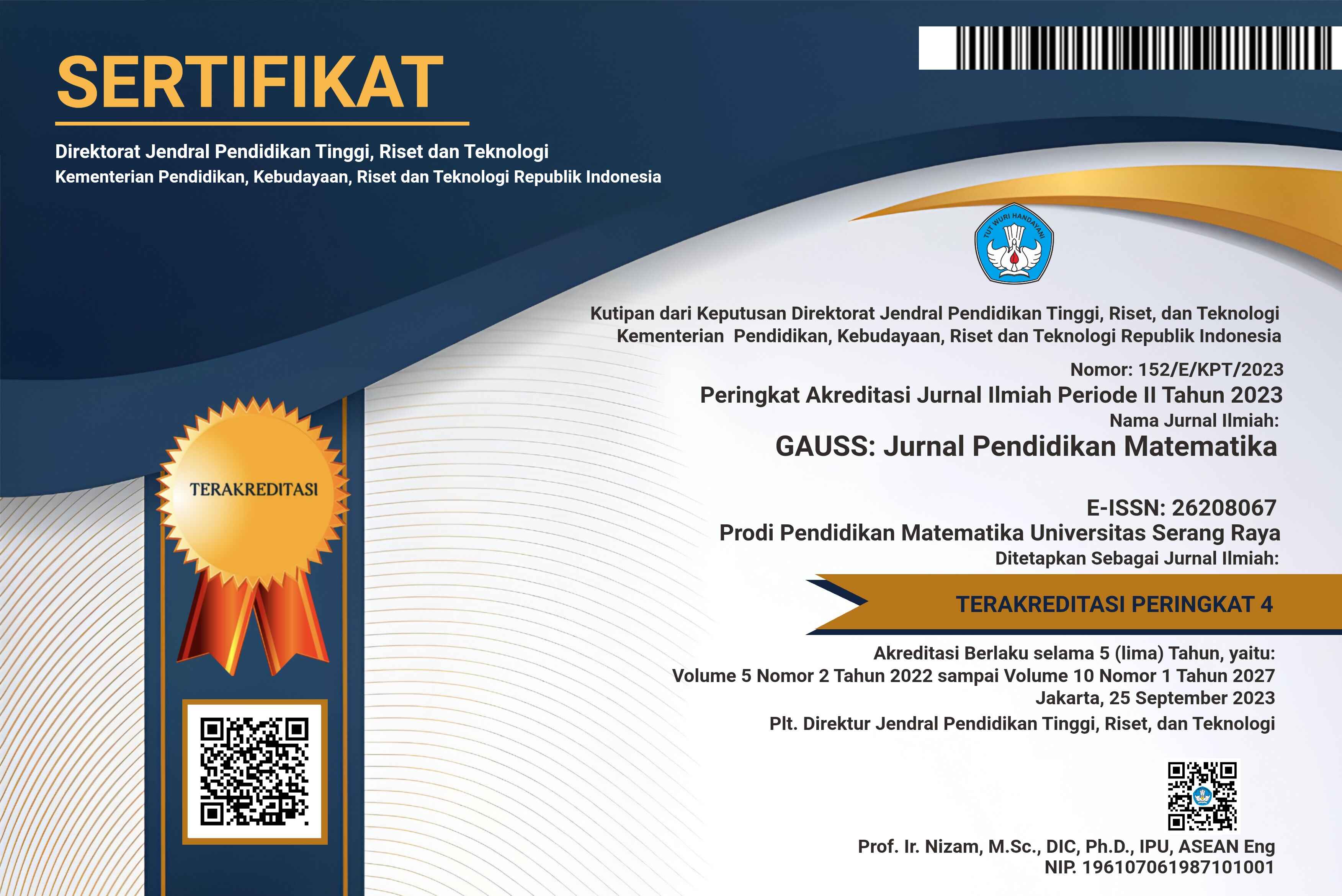Implementasi Interpolasi Polinomial Bentuk Baku dan Metode Selisih Terbagi Newton Menggunakan Excel dan Google Colab
DOI:
https://doi.org/10.30656/gauss.v8i1.10589Abstract
Abstrak
Penelitian ini bertujuan menganalisis serta membandingkan efektivitas penerapan metode interpolasi polinomial bentuk baku dan metode selisih terbagi Newton memakai dua perangkat bantu: Microsoft Excel dan Google Colab. Interpolasi polinomial adalah cara numerik yang dipakai guna menaksir nilai fungsi dari titik-titik data khusus. Penelitian ini menggunakan suatu pendekatan kualitatif dengan suatu metode studi literatur untuk mengkaji teori, algoritma, serta penerapan praktis dari masing-masing metode tersebut. Hasil analisis menunjukkan bahwa kedua metode tersebut mampu memberikan hasil yang akurat, namun efektivitas dari keduanya dipengaruhi oleh media yang digunakan. Microsoft Excel lebih mudah digunakan dalam perhitungan sederhana serta visualisasinya, sedangkan Google Colab unggul dalam hal fleksibilitas, efisiensi perhitungan, dan kemampuan mengelola data yang lebih kompleks dengan Python. Penggunaan interpolasi orde lebih tinggi sering kali terbukti memberikan galat yang lebih kecil. Ini menunjukkan tingkat akurasi yang meningkat secara umum. Penelitian ini memberikan kontribusi besar dalam memberikan panduan praktis bagi para pendidik serta para pelajar dalam memilih suatu metode dan suatu perangkat bantu yang sesuai untuk menyelesaikan persoalan numerik interpolasi polinomial.
Kata kunci: Google Colab, Interpolasi Polinomial Newton, Microsoft Excel, Selisih Terbagi.Abstract
This research aims to analyze and compare the effectiveness of applying the standard form polynomial interpolation method and the Newton divided difference method using two tools: Microsoft Excel and Google Colab.Polynomial interpolation is a numerical method used to estimate the value of a function from specific data points.This research uses a qualitative approach with a literature study method to examine the theory, algorithms, and practical applications of each of these methods.The analysis results show that both methods are capable of providing accurate results, but the effectiveness of each is influenced by the medium used.Microsoft Excel is easier to use for simple calculations and visualizations, while Google Colab excels in terms of flexibility, computational efficiency, and the ability to manage more complex data with Python.The use of higher-order interpolation often proves to yield smaller errors.This indicates an overall increase in accuracy.This research makes a significant contribution by providing practical guidance for educators and students in selecting an appropriate method and tool to solve numerical polynomial interpolation problems.This research makes a significant contribution by providing practical guidance for educators and students in selecting an appropriate method and tool to solve polynomial interpolation numerical problems.
Keywords: Google Colab, Polynomial Interpolation Newton, Microsoft Exce, Divided Differences.
Downloads
Published
Issue
Section
License
Copyright (c) 2025 Aulia Az Zahra, Nabila Istiana, Ari Wibowo

This work is licensed under a Creative Commons Attribution-NonCommercial-ShareAlike 4.0 International License.
Authors who publish articles in GAUSS : JURNAL PENDIDIKAN MATEMATIKA agree to the following terms:
- Authors retain copyright and grant the journal the right of first publication with the work simultaneously licensed under a Creative Commons Attribution-ShareAlike 4.0 International License that allows others to share the work with an acknowledgment of the work's authorship and initial publication in this journal.
- Authors are able to enter into separate, additional contractual arrangements for the non-exclusive distribution of the journal's published version of the work (e.g., post it to an institutional repository or publish it in a book), with an acknowledgment of its initial publication in this journal.
- Authors are permitted and encouraged to post their work online (e.g., in institutional repositories or on their website) before and during the submission process, as it can lead to productive exchanges, as well as earlier and greater citation of published work (See The Effect of Open Access).




